Back to basics for early-season walleyes
No need to get fancy when walleyes strap on the feedbag
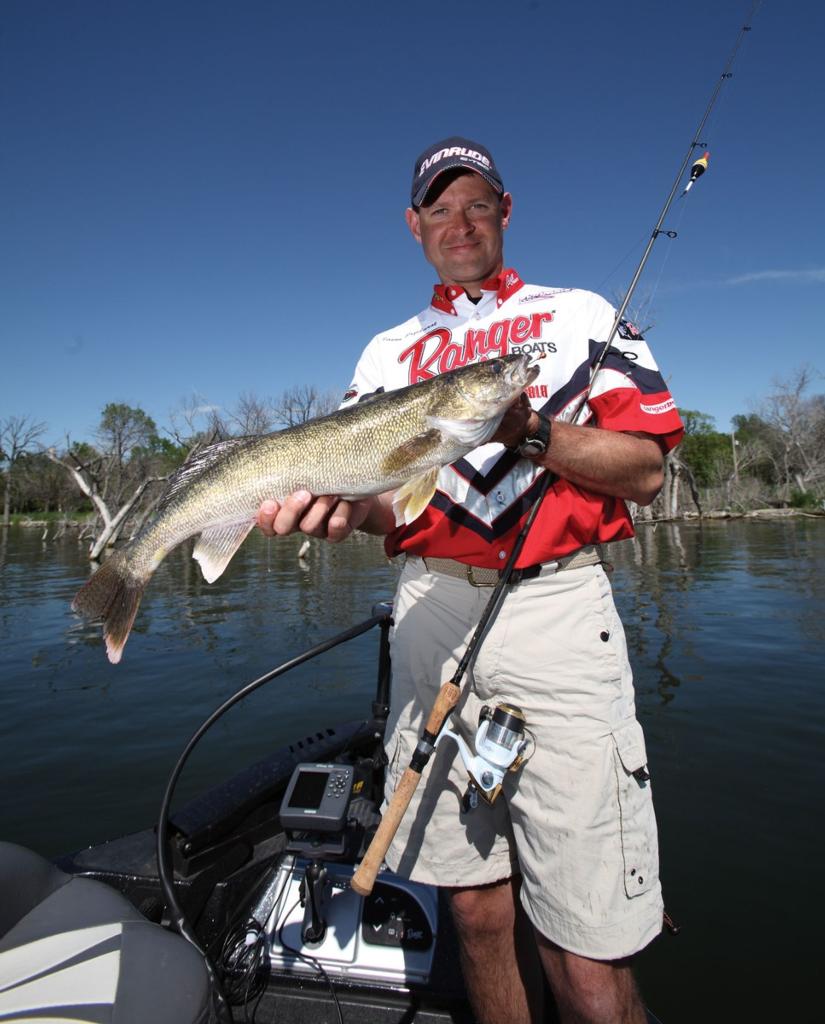
Across the northern walleye belt fishing season is now in full swing. Early season brings some of the best action of the year, as hungry ‘eyes that spent the winter with little to eat now feast on abundant young-of-the-year baitfish.
Catching walleyes isn’t complicated this time of year. The same methods and presentations that worked for your grandfather still work today. Here’s a refresher on some of the basics.
Jigs
Whether tipped with a minnow, leech, night crawler or plastic imitation, the leadhead jig is synonymous with walleye fishing. While a plain hook is even more basic and, in some situations, might work better, jigs sink faster and allow for precise bottom contact, which is where walleyes are found more often than not. The best colors vary from day to day and place to place, but chartreuse, green and orange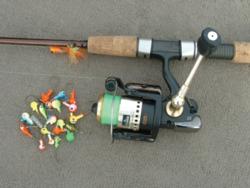 are good choices to start. Weedless jigs in conical shapes can slither through heavy cover without hanging up. Jigs can be fished vertically or horizontally in the water column, can be used to cover water quickly by snap jigging or fan-casting, or can be fished ultraslow under a slip-bobber.
are good choices to start. Weedless jigs in conical shapes can slither through heavy cover without hanging up. Jigs can be fished vertically or horizontally in the water column, can be used to cover water quickly by snap jigging or fan-casting, or can be fished ultraslow under a slip-bobber.
Live-bait rig
Another opening-day standby, the live-bait rig merely separates the weight from the hook via a snell, the length of which varies from as little as 3 feet to 8 feet or more, depending on water clarity and fishing pressure. If the water is very clear and/or fishing pressure is heavy, longer snells are better. 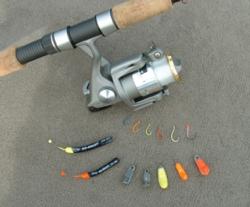 Live-bait rigs work well during slow and negative bites. With leeches, use a No. 8 or No. 10 hook; crawlers require a No. 6 or No. 4; and minnows work well with a No. 4 or No. 2, depending on the size of the minnow. Slip-sinkers come in all sizes and shapes, but a good all-around choice is a 3/8-ounce barrel-shaped sinker, which can be fished effectively from 10 feet down to about 20 feet. Go lighter in shallower water and heavier in deeper water.
Live-bait rigs work well during slow and negative bites. With leeches, use a No. 8 or No. 10 hook; crawlers require a No. 6 or No. 4; and minnows work well with a No. 4 or No. 2, depending on the size of the minnow. Slip-sinkers come in all sizes and shapes, but a good all-around choice is a 3/8-ounce barrel-shaped sinker, which can be fished effectively from 10 feet down to about 20 feet. Go lighter in shallower water and heavier in deeper water.
Bobber rigs
Bobber rigs, especially the slip styles, rank with live-bait rigs when it comes to prevalence in the opening-day arsenal. Both work well in cold water, when walleyes can be sluggish. But with a bobber you can slow your presentation to a dead stop, which is sometimes necessary to get walleyes to bite. 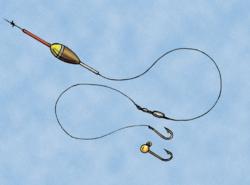 Perhaps you’ve heard the analogy to a doughnut on a table. You might look at it for 10 minutes without making a move. Then you succumb to temptation and take a bite. That’s how a bobber rig works on a finicky walleye. Dozens of different bobber styles are available, including lighted models for night fishing. Use them with plain hooks or leadhead jigs tipped with live bait. But when using leeches or night crawlers, make sure the water is warm enough for them to swim.
Perhaps you’ve heard the analogy to a doughnut on a table. You might look at it for 10 minutes without making a move. Then you succumb to temptation and take a bite. That’s how a bobber rig works on a finicky walleye. Dozens of different bobber styles are available, including lighted models for night fishing. Use them with plain hooks or leadhead jigs tipped with live bait. But when using leeches or night crawlers, make sure the water is warm enough for them to swim.
Crankbaits
There isn’t a crankbait in the world a walleye won’t chase under the right circumstances, but the most popular opening-day bait is probably the No. 11 floating Rapala, for walleyes often are in water 8 feet or less on opening day. But no matter at what depth the fish are hanging, a crankbait can reach them. Dive charts are available that show how deep many popular crankbaits run. Some anglers fish shallow-running crankbaits in deep water by running them behind bottom bouncers or three-way rigs. Profile is important when choosing a crankbait. It’s usually best to choose a crankbait that imitates the primary forage fish. Yet for reasons unknown, walleyes in one lake will prefer stout crankbaits while walleyes in another lake prefer slender styles, even though the forage base would indicate otherwise. Trolling crankbaits is always good in low-light, when walleyes are aggressive. Casting crankbaits to windswept shorelines is another good opening-day technique. As tournament fishing has proven, you can’t go wrong running crankbaits for walleyes.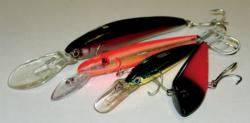
Tips from the pros
Here are other tips from today’s top walleye pros on what works best on the opener.
“If you fish the Mississippi River between Wisconsin and Minnesota, which is open year round, add leadcore to your choices. Rivers anywhere call for three-way rigs with gumdrop floaters or original Raps. And often a spinner minnow or spinner crawler is gangbusters because nobody is using them yet.” – Scott Fairbairn, Hager City, Wis., five-time top-10 finisher on the FLW Walleye Tour.
“Pulling cranks is always good in the evenings or at night, but the problem is that many areas get too crowded for a good trolling run. I’ve done real well long-lining a leech or crawler in 8 to 15 feet on the opener. The key is to get your bait far away from the boat.” – Perry Good, Brainerd, Minn., sixth-place finisher at 2009 Walleye Tour event on Lake Erie.
“A jig and plastic combination lets you cover water a lot faster than a jig and minnow.” – Jason Przekurat, Stevens Point, Wis., winner of 2007 Walleye Tour event on Mississippi River and two-time FLW Walleye Tour Angler of the Year.
“Shore fishing in many areas is more productive early in the season than fishing out of a boat, especially at night.” – Pete Harsh, Sauk Centre, Minn., 2008 FLW Walleye Tour Angler of the Year.
“A jig and minnow fished on newly emerging weeds can be the best bite of the year.” – Tom Keenan, Hatley, Wis., winner of 2003 Walleye Tour event on the Mississippi River and 2006 FLW Walleye Tour Angler of the Year.
“A lot of people overlook the more aggressive presentations, but I’ve found them to be very effective on the opener. A lot of fish are willing to hit faster-moving baits, and typically you’ll be doing this where a lot of others aren’t fishing.” – Jimmy Bell, Ham Lake, Minn., who’s fished 23 FLW tournaments since 2003.
“Make sure to fish where the fish are, which on the opener means the warmest water in the lake. Wind-blown rock piles and gravel shorelines are almost always good.” – Gary Roach, Merrifield, Minn., who’s fished 20 FLW tournaments since 2000.
“I always prefer a jig and minnow on opening day. You can anchor and fan cast, drift along with a drift sock, snap jig or pitch to shorelines. Vertical jigging in the current below dams is always good, too.” – Ted Takasaki, East Gull Lake, Minn., who has four top-10 finishes on the FLW Walleye Tour.